Change Language :
Successful stage rigging equipment applications
Stage Rigging Equipment Solutions
Used for stage construction, lighting systems and audio equipment, igus® products can help you enhance the technical functionality of your application while saving money. igus® products made of high-performance plastics are self-lubricating, maintenance-free and lighter than conventional solutions. In many cases, they are suitable for use where space is at a premium, whilst being quiet and exhibiting very low vibration. We will be happy to help find the right solution for you.
e-chains and cables for moving seated podiums in Budapest's multi-purpose hall
The Hungexpo multi-purpose hall in Budapest is a huge auditorium with rows of seats on 43 platforms that can move flexibly. For the complex guidance of the many cables, those responsible brought the igus project team on board and use our E4 and E2 e-chains and chainflex control, data, and bus cables.
Learn more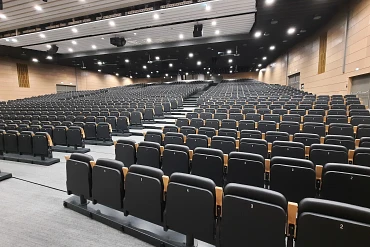
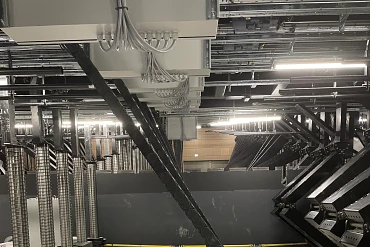
Cable guidance for challenging multimedia installation in Moscow's GES-2 auditorium
Safely moving state-of-the-art equipment in this modern event hall in a prestigious area of Moscow. To ensure that the complex, specific cabling can be safely moved over long travels to the hall ceiling, a plastic energy chain that is wound and unwound on an e-spool compact is used.
Learn more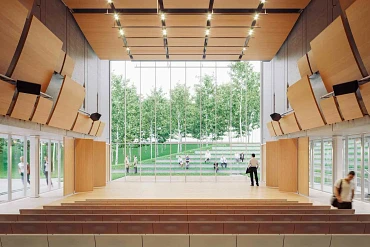
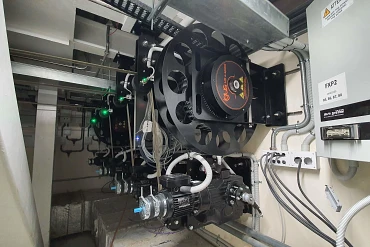
Various e-chain systems ensure safe cable guidance in Waagner-Biro stage technology
In theatres and operas and on cruise ships, the stage technology specialist Waagner-Biro Stage Systems has been developing innovative technical systems for the big show for over 150 years. To safely move high loads such as acoustic and lighting systems, stage sets, or entire stage podiums, the design engineers use our smooth-running energy chains – the E4 series, e-spool, and zig-zag system.
Learn more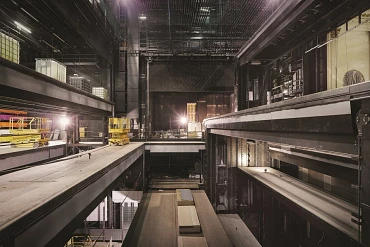
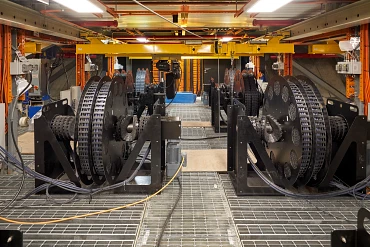
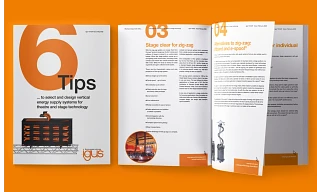
White Paper:
Vertical chain hoists in stage rigging
Like every industry, stage technology has its own requirements regarding machine parts and materials. In this white paper, we would like to give you six tips for selecting and designing vertical energy supply systems for stage technology
Smooth-running energy chains for Tagesschau studio camera robots
Three camera robots are suspended under the ceiling of the Tagesschau studio to achieve smooth, highly precise camera movements. Smooth running, low vibration, and wear resistance are the main requirements for the energy chains for guiding the extensive cable packages. E6 chains and chainflex control cables are used.
Learn more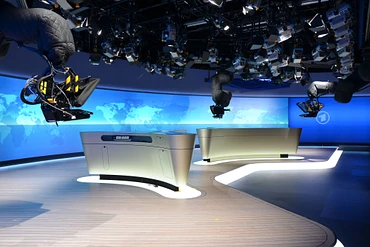
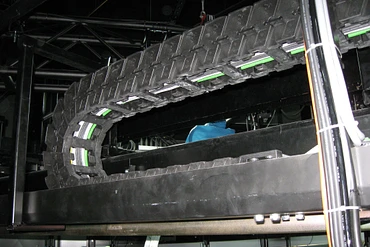
Browse the Engineer's Toolbox
Space-saving guidance system for all media at the Cologne Opera
e-spools and zig-zag systems are also used in the Cologne Opera stage pit to supply power, data, and hydraulics for moving the stage podiums. They are inexpensive and can be installed in tight spaces thanks to their compact design.
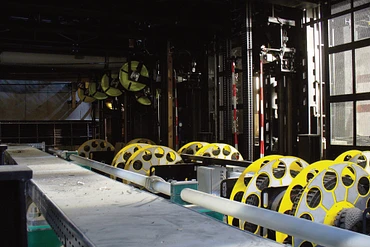
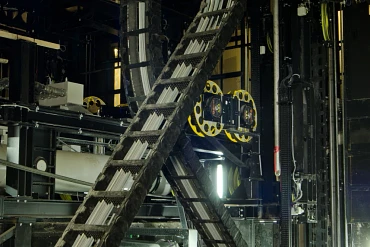
Safely moved lighting trusses at the Cultural and Congress Centre in Toruń (Poland)
Ten e-spool systems equipped with robust chainflex control cables are used in the moving lighting trusses of the Cultural and Congress Centre in Toruń, Poland. Mounted on the fly walks, the compact system works quietly and invisibly.
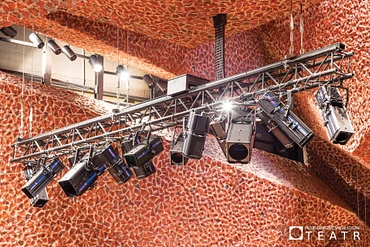
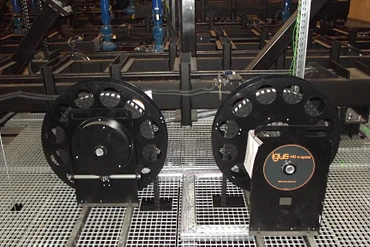
Quiet stage podium adjustment with maintenance-free linear guides
SBS Bühnentechnik GmbH uses drylin W linear guides in the Konzerthaus Berlin stage lifting device. Equipped with heavy-duty supported shafts, they not only are quiet and low-vibration, but also require virtually no maintenance thanks to their dry-operating plastic gliding elements in the linear carriage.
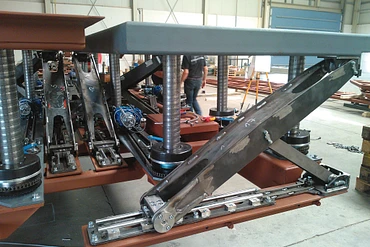
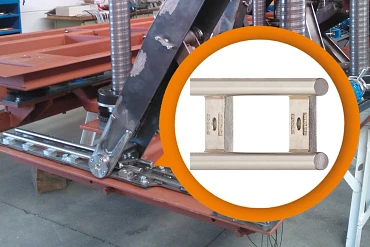
Stage Rigging Equipment FAQs
Essential stage rigging equipment includes:
- Trusses: For supporting lights and scenery
- Hoists: For lifting and lowering equipment
- Pulleys and blocks: For redirecting lift lines
- Shackles and turnbuckles: For secure connections
- Safety cables: For secondary fall protection
- Control systems: For managing motorized elements
- Load cells: For monitoring weight distribution
- Energy chains: For organizing moving cables
To ensure proper load distribution in stage rigging:
- Calculate total and point loads accurately
- Use load cells for real-time weight monitoring
- Implement appropriate spreader bars or bridles
- Balance loads across multiple support points
- Adhere to manufacturer's weight limits for all equipment
- Regularly inspect and maintain all rigging components
- Employ certified rigging professionals for complex setups
- Use computer-aided design tools for precise planning
Types of hoists used in stage rigging:
- Manual chain hoists: For simple, low-cost lifting
- Electric chain hoists: For frequent, heavy lifting
- Wire rope hoists: For smoother, quieter operation
- Pneumatic hoists: For explosive environments
- Motorized winches: For precise control of large set pieces
- Hydraulic hoists: For high-capacity lifting in limited spaces
Each type offers different benefits in terms of capacity, speed, and control.
Factors to consider when choosing a truss system:
- Load capacity required
- Span length needed
- Type of productions (permanent vs. touring)
- Ease of assembly and disassembly
- Compatibility with existing equipment
- Material (aluminum vs. steel)
- Budget constraints
- Local regulations and safety standards
Key safety considerations for stage rigging equipment:
- Regular inspection and maintenance schedules
- Proper training for all personnel
- Use of appropriate personal protective equipment (PPE)
- Adherence to load capacity limits
- Implementation of redundant safety systems
- Clear communication protocols during rigging operations
- Proper documentation and record-keeping
- Compliance with industry standards and local regulations
Maintaining and inspecting stage rigging equipment:
- Conduct daily visual inspections before use
- Perform weekly functional checks on moving parts
- Schedule monthly detailed inspections of cables and connections
- Arrange annual comprehensive inspections by certified professionals
- Replace worn or damaged components immediately
- Lubricate moving parts according to manufacturer specifications
- Keep detailed maintenance logs for all equipment
- Train staff on proper handling and storage procedures
Control systems in modern stage rigging:
- Enable precise movement and positioning of equipment
- Allow for programmable cues and sequences
- Integrate with lighting and sound systems for synchronized effects
- Provide real-time monitoring of load weights and distribution
- Offer emergency stop functions for enhanced safety
- Allow for remote operation and troubleshooting
- Store and recall multiple show configurations
- Facilitate more complex and dynamic stage designs
Selecting cables and connectors for stage rigging:
- Consider the required load capacity and safety factor
- Choose appropriate materials for the environment (indoor vs. outdoor)
- Ensure compatibility with existing equipment
- Select the correct size and type for the application
- Consider flexibility needs for moving components
- Choose connectors with secure locking mechanisms
- Opt for high visibility colors for safety
- Ensure compliance with relevant safety standards
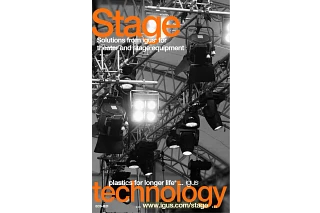
Brochure:
Explore Our Brochure for Cutting-Edge Solutions in the Stage rigging Industry!
Discover silent, maintenance-free solutions that will keep your shows running smoothly. Download our theater industry catalog now and take the first step towards more reliable, cost-effective stage equipment.
Entertainment rigging, stage rigging and stage lighting solutions
Contact Us
For further questions

Customer Service
Customer Service:
Phone: Monday to Friday from 8 am - 8 pm
LiveChat: 24 hours
Book a Call
Book an Appointment with a Product Expert


